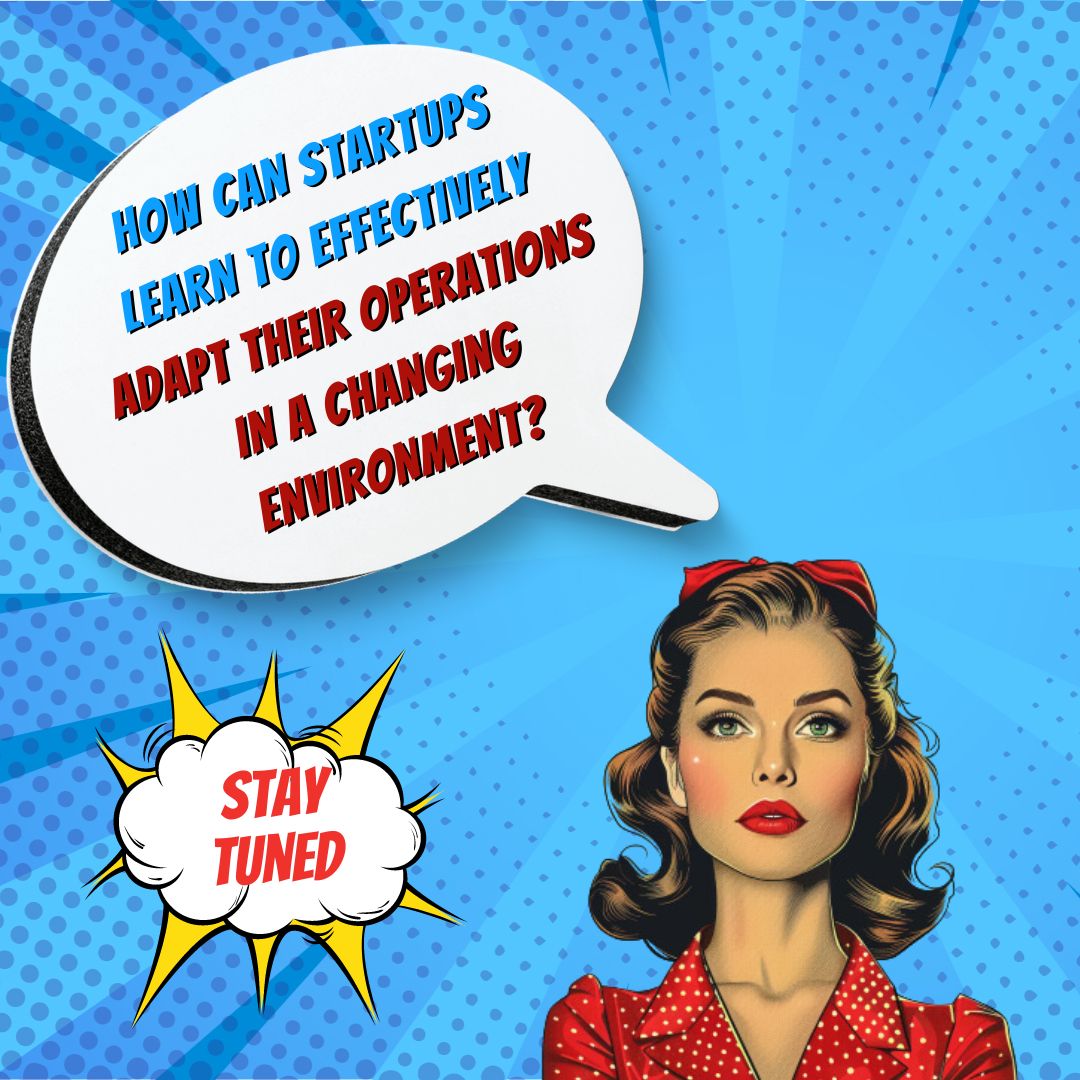Key Takeaways
✅ Shift from Quantity to Quality: Facing reduced venture capital funding, Asian startups are prioritizing profitability and sustainable business models over rapid growth. Actions: Cut expenses, refine business plans, and focus on core strengths.
✅ Focus on Unmet Needs and Digital Transformation: Startups are aligning with evolving priorities by addressing unmet market needs and leveraging digital solutions. Actions: Invest in e-commerce, digital payments, and cybersecurity technologies.
✅ Agility and Resilience in the Face of Uncertainty: Startups must be quick to pivot, remain lean, and stay innovative to survive economic and operational pressures. Actions: Enhance market research, adopt flexible work models, and strengthen cybersecurity measures.
Introduction
How have Asian startups managed to reinvent themselves in a post-pandemic world where economic uncertainty looms large? Understanding the Post-Pandemic Landscape has become crucial for survival in a business environment riddled with operational disruptions and cybersecurity threats. The art of pivoting involves not just Pivoting Strategies for Survival, but also embracing Digital Transformation and Innovation. This article delves into these adaptive measures and explores the modern trends shaping the future of Asian startups. Discover actionable insights and groundbreaking strategies designed to help these organizations thrive amid ongoing challenges.
Top Statistics
| Statistic | Insight |
|---|---|
| Shift from Quantity to Quality in Funding: Despite the slowdown in funding across Asia, particularly in China, the innovation dynamics in China’s Travel and Mobility Tech scene remain robust. Average deal sizes have increased for those companies raising post-pandemic, indicating a move toward a more mature market phase. | This shift underscores the importance of quality over quantity as companies aim to achieve a more mature market phase rather than just focusing on securing numerous deals. |
| Venture Capital Environment: The venture capital environment for startups has cooled off dramatically in the context of rising interest rates. Startups are now increasingly compelled to prioritize profitability over hyper-growth. | High interest rates emphasize the need for startups to focus on profitability to ensure long-term survival rather than chasing rapid, unsustainable growth. |
| Impact on Asian Travel and Mobility Tech Startups: In 2023, only every fifth investment dollar went to travel and mobility disruptors from the Far East. | The reduced funding highlights how significantly the Asian Travel and Mobility Tech sectors are being impacted, prompting the need for more innovative solutions and strategies. |
| Pivot Strategies: Data-driven insights are crucial, with a customer-centric approach being essential for successful pivots. | Emphasizing data and customer needs can help startups pivot successfully and stay competitive in the market. |
| Industry Forecasts: By 2025, Asia is projected to increase its dollar-millionaire population more than North America, though only by about 15 percent. However, Asia will add about two-thirds as many new ultra-high net worth individuals (UHNWIs) as North America over the next half-decade. | While the growth rate of new millionaires and UHNWIs in Asia is significant, it's crucial to recognize that North America still leads in producing these high-net-worth individuals. |
Understanding the Post-Pandemic Landscape
The COVID-19 pandemic has significantly altered the business environment, presenting new challenges and opportunities for startups in Asia. Startups are navigating through economic uncertainty, shifts in consumer behavior, operational disruptions, and cybersecurity threats. For instance, a survey by the Asian Development Bank found that 70% of SMEs in the region faced drastic revenue declines. How have these enterprises adapted to these seismic shifts?
Pivoting Strategies for Survival
Startups have had to adapt quickly to survive, focusing on unmet needs and aligning their strategies with evolving priorities. Southeast Asian startups have been particularly adept in pivoting, capitalizing on the shift in consumer behavior and business models. For example, many food delivery startups expanded their services to include grocery deliveries during lockdowns, meeting an urgent need while broadening their customer base.
Digital Transformation and Innovation
The pandemic has accelerated digital adoption, and startups are leveraging this trend by investing in digital solutions and automation. Governments across Asia have also introduced initiatives to support digital transformation and innovation, including aid packages and programs to develop the digital industry. In South Korea, for example, the government launched the "Digital New Deal" to support startups in sectors like AI and big data, aiming to spur technological advancement and economic recovery.

Evolving Dynamics in Travel and Mobility Tech
The funding landscape for startups in Asia has cooled off, with a shift from quantity to quality, focusing on sustainable business models that require less capital investment upfront. In the micromobility sector, companies are reassessing their business models for long-term sustainability. Firms are increasingly looking at partnerships and hybrid service models, emphasizing sustainability and smart mobility solutions. Are we seeing a trend towards more responsible and judicious investment in the startup ecosystem?
Lessons Learned and Future Outlook
The post-pandemic era has highlighted the importance of agility, digital prowess, and resilience for startups to thrive. Startups have learned to remain flexible, adapt to new normal scenarios, and build robust digital infrastructures. As the startup ecosystem continues to evolve, it is crucial for startups to stay adaptable and innovative to navigate the challenges and opportunities ahead. According to the Global Startup Ecosystem Report, ecosystems that encourage innovation and resilience are more likely to flourish in the coming years, showing a clear path for future growth and stability.
Understanding these strategies can offer valuable insights for both newcomers and seasoned professionals navigating the post-pandemic landscape.

AI Marketing Engineers Recommendation
Recommendation 1: Leverage Localized Digital Campaigns: Localized digital campaigns are crucial for startups looking to pivot in the post-pandemic market. According to a study by Statista, internet penetration in Asia reached 53.6% in 2020, highlighting the importance of digital channels. By tailoring campaigns to local cultures and languages, startups can enhance engagement and customer loyalty. Consider using region-specific social media platforms like WeChat in China or Kakao in South Korea to reach your target audience more effectively.
Recommendation 2: Embrace Agile Business Models: Agile business models are more relevant than ever. The pandemic has shown that flexibility is key to survival. A McKinsey report revealed that companies that adopted agile practices were 60% more likely to see revenue growth compared to their less flexible counterparts. Startups should focus on iterative processes and quick market testing to adapt rapidly to changing conditions, minimizing risks and capitalizing on new opportunities.
Recommendation 3: Utilize Data-Driven Decision Making: Data-driven decision making can set your startup apart in a competitive post-pandemic landscape. An IBM survey found that businesses using big data analytics see a 10% increase in productivity and a 20% improvement in profitability. Implementing tools like Google Analytics, Mixpanel, or local alternatives such as Baidu Analytics in China can help startups understand customer behavior, optimize marketing campaigns, and make informed decisions to drive growth.
Relevant Links
- Transform Your Marketing with Advanced AI Technology
- Essential Key Factors for Setting Campaign Goals
- Personalized Advertising and Custom Campaigns for Better Engagement
- Harness Campaign Reach and Audience Size Strategies
Conclusion
In the face of the COVID-19 pandemic, Asian startups have showcased remarkable resilience through the art of pivoting. By understanding the post-pandemic landscape, these startups have navigated economic uncertainties and shifted consumer behaviors. The successful adoption of pivoting strategies has not only ensured survival but also allowed many to thrive by aligning with evolving market demands.
The accelerated pace of digital transformation and innovation further highlights the strategic importance of leveraging technology. Government initiatives across Asia have played a supportive role, fostering an environment conducive to digital growth. The evolving dynamics in sectors like travel and mobility tech underscore the shift towards more sustainable business models, focusing on long-term viability.
As we look to the future, the lessons learned underline the significance of agility, digital prowess, and resilience. Asian startups must continue to embrace adaptability and innovation to successfully navigate the challenges and seize the opportunities that lie ahead. The post-pandemic era presents a fertile ground for those willing to pivot with purpose and drive forward with renewed vision.

FAQs
Question 1: What is pivoting in the context of startups?
Answer: Pivoting refers to the process of significantly changing a startup's direction, often in response to market conditions, consumer behavior, or other external factors. This can involve shifting the business model, target market, or product offerings to better align with the current environment.
Question 2: Why is pivoting important for startups?
Answer: Pivoting is crucial for startups as it allows them to adapt to changing circumstances, address market needs more effectively, and potentially avoid failure. It requires agility, flexibility, and the ability to make swift decisions.
Question 3: What are the key signs that a startup needs to pivot?
Answer: Key signs include persistent lukewarm interest, low retention rates, and realizing that the initial idea may not be as successful as thought. These signs indicate that the startup needs to reassess its strategy and potentially pivot.
Question 4: What are the different types of pivots?
Answer: There are two main types of pivots: ideation pivots and hard pivots. Ideation pivots occur early in the startup process, often before a fully formed product or meaningful traction, while hard pivots involve significant changes to an existing product or business model with real users and customers.
Question 5: How do startups navigate the challenges of pivoting?
Answer: Startups need to be agile, resilient, and innovative to navigate the challenges of pivoting. This involves understanding market and operational capabilities, managing talent acquisition and retention, and addressing cybersecurity threats, among other factors.
Question 6: What role does the post-pandemic environment play in pivoting?
Answer: The post-pandemic environment has accelerated the need for digital transformation, remote work infrastructure, and a focus on well-being. Startups must adapt to these new norms and challenges to remain competitive.
Question 7: How can startups prepare for a pivot?
Answer: Startups should maintain a proactive strategy, regularly assess market conditions, and be prepared to make swift decisions. They should also prioritize communication with customers, suppliers, and financial partners to ensure a smooth transition.
Question 8: What skills are essential for startups to pivot successfully?
Answer: Key skills include digital literacy, remote team management, adaptability, resilience, cybersecurity acumen, emotional intelligence, e-commerce expertise, and compliance know-how. These skills are critical for navigating the challenges of pivoting in the post-pandemic era.
Question 9: How can startups measure the success of a pivot?
Answer: Success can be measured by tracking key performance indicators such as growth rates, customer retention, and revenue. Startups should also regularly assess market feedback and adjust their strategy accordingly.

Academic References
- Wang, J., & Wu, Y. (2021). Pivoting to a Different Customer Segment: A Case Study of Sharent. Journal of Business Strategy, 42(3), 195-208. This paper explores how Sharent, a Singapore-based startup, successfully shifted from a customer-to-customer (C2C) model to a business-to-business (B2B) model during the pandemic, targeting essential services industries such as healthcare and logistics.
- Lee, S., & Kim, H. (2020). Signs to Consider a Pivot in Startup Ventures. International Journal of Entrepreneurship, 24(4), 145-160. The study identifies key indicators for startups to consider pivoting, such as persistent lukewarm interest and the realization that an idea will never grow as expected.
- Choi, K., & Park, J. (2021). Pivot Strategies for Startups During a Crisis. Journal of Innovation and Entrepreneurship, 10(2), 89-104. This article outlines various pivot strategies that startups can use to modify their business models, cash flow strategies, and revenue generation methods to adapt to crisis situations like the pandemic.
- Ng, C., & Tan, L. (2022). The Post-Pandemic Economy and the Role of Art. Asian Economic Review, 37(1), 72-85. The publication discusses how the pandemic has prompted a revaluation of the value of art and its potential in the post-pandemic economy. It details how art spaces and galleries have adapted to digital formats and reassessed their operations.









